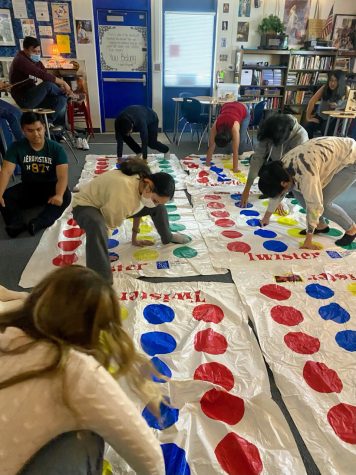Los Al Wi-Fi outage raises questions about educational internet reliance
On a day without Wi-Fi, Los Al was left with little to do.
A computer at Los Al with no internet access, mimicking the situation that occurred on January 19.
January 31, 2023
LOS ALAMITOS, CA – On Thursday, Jan. 19, Los Alamitos High School experienced an all-day Wi-Fi outage. Students and teachers across campus were stumped, unable to do the majority of their schoolwork and lessons without internet access. The incident sparked conversation across campus. A few decades ago, this would not have been an issue that caused classes to stop teaching for a whole day. When did the internet become such a critical part of our education?
The history of internet and public education
There are records of public schools having access to the internet for almost three decades. A 1994 survey by the National Center for Education Statistics revealed that 35% of public schools were connected to the internet at the time. By 2000, that statistic rose to 90%. The internet has been used by teachers and students in a myriad of ways. Turning in, grading, and returning papers is now easier than ever through popular sites such as Google Classroom and Canvas. Furthermore, several teachers also use educational websites like NoRedInk and Delta Math to teach their students basic fundamentals.
The most prominent example of the internet being a tool for education took place during the height of the 2020 COVID-19 pandemic. During March 2020, the United States went under stay at home lock-down. Due to the fact that teaching could not be conducted anyway other than online during the pandemic, a large amount of education funding went into online learning. However, the necessity of online education during the pandemic brought up questions of internet accessibility and funding.
Many parents have also questioned the effectiveness of online education. Some claim that since online education is still a relatively new tool that is in the process of developing every day, it will result in a poor learning experience for students. On the other side, many have praised the use of online tools for teaching and learning. A study from Shift E-learning revealed that online education raises retention rates by 25 to 60%. Additionally, online teaching also takes 40 to 60% less time than traditional education.
The pros and cons of internet-based education
The question now is if the pros of the internet outweigh the cons. The internet and computer access have opened up a whole new world of education to millions across the world. There are now more ways to teach and more ways to accommodate students with different needs. Furthermore, computers allow for a fast and easy way for teachers to organize their work.
However, the internet also poses certain problems. For one, not every student has access to the internet. Some cannot afford a computer and some live in areas with poor Wi-Fi. Some students did not live in homes with the internet or computers. According to a 2020 study from the Organization for Economic Cooperation and Development (OECD), only 34% of students in Indonesia had access to a computer to use for their schoolwork.
Most teachers who use computer-based teaching keep all of their materials online, so when the Wi-Fi goes out, like it did at Los Al, it is virtually impossible for any learning to occur. Additionally, having computers out during school hours opens the doors for students to deviate from their schoolwork in favor of playing online games. Although many schools, including Los Al, utilize web page blockers to combat this issue, several students have found ways to get around these restrictions and play games despite the obstacles. Either way, internet use has become a critical part of education across the nation.
At Los Al, classes across campus had little to do without access to the internet. Especially in subjects such as history and English, teachers did not have the ability to teach lectures and students could not write in their virtual notes. Because of this, students had a day where they did almost nothing. Several classes sat and watched movies through the use of a DVD player while others played games with each other.
“In my Journalism class…we made one giant Twister game and everyone in the class was able to participate!” said Katie Arnoult, a freshman.

Although the day was unproductive, many agree that it was nice to have a break from school while still remaining on campus with friends and staff.
“It was super fun… and we were all laughing our heads off!” Arnoult said. “It is definitely something that I won’t forget easily!”
Still, even one missed day can throw off some teachers’ schedules for the whole semester. Furthermore, most were unsure if the internet would even be fixed the next day. Thankfully, it was, but it also raised questions about whether there should be more procedures put into place in case of a similar occurrence happening again.
Conclusion
The internet has gained exponential prevalence in the education system since it first appeared decades ago. Although the crux of education is often interpreted as being conducted through pen and paper, a new symbol of teaching is the computer. The internet at Los Al is back, but the question remains: Will the internet continue to dominate our education?








